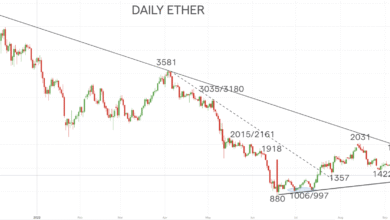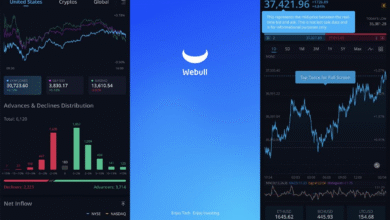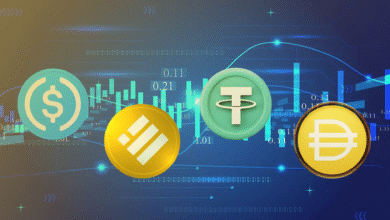JPMorgan Chase Stablecoins: Jamie Dimon’s Strategic Move

JPMorgan Chase stablecoins are on the cusp of transforming the banking landscape, as the giant financial institution acknowledges the growing fintech competition in the digital payments arena. CEO Jamie Dimon, despite his skepticism about the concept, recognizes that staying aloof from stablecoin technology is not an option for the largest bank in the U.S. Last month, JPMorgan unveiled plans for a specialized stablecoin meant exclusively for its clients, paving the way for potential wider acceptance in the future. This move aligns with ongoing JPMorgan stablecoin news that suggests a proactive stance in understanding and leveraging stablecoin payments. As cryptocurrency banking gains traction, JPMorgan’s involvement with stablecoins reflects its commitment to innovation amid the evolving regulatory landscape.
As the world of digital finance continues to expand, banking institutions like JPMorgan Chase are now exploring alternative blockchain-based currencies often referred to as stablecoins. These digital representations of value, pegged against traditional currencies such as the U.S. dollar, promise a level of stability that many see as essential in the volatile cryptocurrency market. Jamie Dimon, who has expressed mixed feelings about such innovations, acknowledges that engaging with stablecoins is necessary to remain competitive in an increasingly digital payments sector. With announcements around their own version of these digital currencies, JPMorgan is not just observing but actively participating in the transformative wave of fintech, especially as other major banks like Citigroup and Bank of America contemplate similar moves. This strategic pivot underscores the urgency for traditional banks to adapt to new payment technologies if they wish to maintain relevance against emerging market players.
The Emergence of JPMorgan Chase Stablecoins
JPMorgan Chase’s foray into the stablecoin market marks a significant pivot for one of the world’s largest financial institutions. CEO Jamie Dimon may express skepticism about the allure of stablecoins, yet the bank recognizes the necessity to engage with this evolving technology. By announcing a limited version intended for its clients, JPMorgan aims to explore how stablecoin payments can enhance transactional efficiency for banking customers. Such measures indicate that the traditional banking giant is keen on innovating, despite Dimon’s personal reservations regarding digital currencies.
The implications of stablecoins are profound; they can transform payment systems and improve cross-border transactions. Stablecoins, pegged to fiat currencies, promise reduced volatility compared to cryptocurrencies, making them an attractive option for banking solutions. As JPMorgan looks to develop its stablecoin, it positions itself strategically to compete with fintech companies that have started to dominate the payments landscape. Embracing stablecoin technology could allow JPMorgan to maintain its competitive edge while addressing the challenges posed by agile fintech disruptors.
Jamie Dimon’s Perspective on Stablecoin Technology
Jamie Dimon, a noted critic of cryptocurrencies like Bitcoin, acknowledges the inevitability of integrating stablecoins into the traditional banking framework. During a recent earnings call, he expressed that while stablecoins are real, their utility compared to traditional payment methods remains questionable. His remarks underline a prominent sentiment in the banking sector; established institutions face increasing pressure to adapt to innovations like cryptocurrency banking and the conveniences brought by fintech advancements. Dimon understands that to thrive, JPMorgan must delve deeper into understanding stablecoins and potentially benefit from their advantages.
As banks like Citigroup and Bank of America also explore the potential of stablecoins, the competition intensifies. JPMorgan, spearheaded by its proactive approach, aims to decipher the mechanics of both the JPMorgan deposit coin and other stablecoin technologies. This exploration allows the bank to evaluate whether stablecoin implementations can coexist or even enhance existing services. Dimon’s commitment to exploring stablecoin payments indicates a strategic mindset – ensuring that JPMorgan does not fall behind in the fintech race.
Staying Competitive in the Fintech Landscape
In an era where fintech competition is gaining dominance, JPMorgan Chase recognizes the need for innovation to safeguard its position within the financial ecosystem. The rise of fintech startups has proven that they are not just disrupting traditional services; they are setting new standards for customer experience and transaction efficiency. With Jamie Dimon at the helm, there is an awareness of the necessity to engage in emerging payment technologies, including stablecoins, to prevent losing market share.
JPMorgan’s possible collaborations with fintech firms and their exploration of stablecoin options signal an eagerness to modernize banking services. As traditional banking models are challenged by faster, cheaper solutions, such as those provided by stablecoins, the need for legacy institutions to innovate becomes paramount. By investing in understanding stablecoins, JPMorgan aims to enhance its payment solutions and solidify its reputation as a forward-thinking leader in the banking industry.
Potential Collaborations Among Traditional Banks
The discussion around the potential for collaboration among traditional banks regarding stablecoins is becoming increasingly relevant. Jamie Dimon’s acknowledgment of fintechs’ capabilities suggests that JPMorgan is contemplating strategic partnerships to bolster its stablecoin initiatives. The mention of joint efforts like the one seen with Zelle indicates a willingness among major banks to unify in efforts that could streamline digital banking solutions and provide robust competition against established fintech players.
For JPMorgan to effectively understand and implement stablecoins, collaborations could enhance knowledge sharing and innovation in this new payment landscape. Citigroup’s interest in issuing its own stablecoin and Bank of America’s commitment to participation showcase the broader trend among banks to explore collective approaches to digital currency. By working together, these institutions can uncover synergies that could lead to the development of standard practices in stablecoin usage and optimization within the banking sector.
Impact of Stablecoins on Traditional Banking Systems
Stablecoins represent a potentially transformative element for traditional banking systems. Designed to circumvent the longer settlement times associated with traditional methods like ACH and SWIFT, stablecoins offer faster and more cost-effective ways to transact. As Jamie Dimon pointed out, the need to explore this technology is pressing for JPMorgan to avoid ceding its ground to more agile fintech companies that are ready to leverage these advantages.
The integration of stablecoins into mainstream banking could redefine the way transactions are processed, presenting opportunities for improved liquidity and efficiency. By adopting stablecoins, banks can provide clients with instant transfers and lower fees, aligning services with the expectations of a more digitally-savvy clientele. This shift has the potential to enhance client experiences significantly while simultaneously challenging the existing regulatory frameworks that govern traditional banking.
Regulatory Considerations for JPMorgan Chase Stablecoins
As JPMorgan Chase moves into stablecoin technology, regulatory considerations loom large. The evolving landscape of cryptocurrency regulations is crucial for banks as they navigate the complexities associated with digital currencies. Jamie Dimon’s recognition of these regulatory challenges underscores a broader concern within the banking sector: ensuring compliance while pursuing innovation. The development of JPMorgan’s stablecoin will likely necessitate close collaboration with regulators to ensure that all requirements are met.
Moreover, as stablecoins gain traction, regulatory bodies will increasingly scrutinize their impacts on the financial system. Ensuring the stability of these assets and protecting consumers will be paramount as more banks enter this space. JPMorgan’s proactive stance in exploring stablecoins positions it to be at the forefront of the conversations surrounding regulation, helping shape policies that facilitate safe and effective deployments of stablecoins in traditional banking.
JPMorgan’s Strategic Insights into Stablecoin Payments
Jamie Dimon’s remarks on stablecoin payments illuminate JPMorgan’s strategic insights regarding the future of banking. His skepticism paired with the bank’s decision to engage directly with stablecoin technology highlights a nuanced approach to innovation. Dimon acknowledges that while the appeal of stablecoins is debated, JVMorgan must position itself to leverage such technologies to remain relevant amidst growing competition from agile fintech firms.
The exploration of stablecoin payments not only provides a new avenue for transactional efficiency but also enhances JPMorgan’s product offerings. By ensuring its customers have access to the latest advancements in payment technologies, JPMorgan can boost customer satisfaction while attracting a broader clientele seeking modern banking solutions. Engaging with stablecoins opens the door for a richer, more diversified suite of banking services that can effectively meet the demands of a changing financial landscape.
Future Trends in Stablecoin Adoption
As banks like JPMorgan Chase continue to adapt to the stablecoin landscape, future trends in adoption are likely to evolve rapidly. With the ongoing integration of fintech solutions into everyday banking, it is anticipated that stablecoins will become mainstream components of financial transactions. Dimon’s initiative to explore stablecoins is indicative of a larger trend where banks will increasingly seek to offer versatile solutions that meet the demands of modern consumers.
Furthermore, as technological advancements continue to shape the financial sector, stablecoins are poised to expand beyond simple transactional tools. Innovations such as integrated rewards programs and enhanced security features could redefine customer engagement with banking services. Traditional banks that understand and harness these trends will be better positioned to thrive in a progressively competitive ecosystem, fortified against the disruptions posed by nimble fintech companies.
The Role of Stablecoins in Global Finance
Stablecoins are not merely a passing trend; their role in global finance is rapidly cementing as they offer viable solutions to various transactional inefficiencies. With banks like JPMorgan advancing their exploration of stablecoins, it is evident that these digital currencies have the potential to bridge gaps in both domestic and international payments. Their ability to provide stability in transactions makes them attractive for institutions aiming to navigate currency fluctuations in global markets.
As cross-border transactions often involve high costs and delays, stablecoins can streamline these processes, helping banks remain competitive in an interconnected world. JPMorgan’s involvement in the stablecoin space positions it as a key player in influencing how these tools are received in global markets. The comprehensive understanding and implementation of stablecoins will shape not only JPMorgan’s strategic direction but also the broader landscape of international finance.
Frequently Asked Questions
What is the role of JPMorgan Chase stablecoins in the current fintech landscape?
JPMorgan Chase stablecoins are being introduced as a response to increasing fintech competition. CEO Jamie Dimon acknowledges the need for the bank to be involved in stablecoin technology to stay relevant in a rapidly evolving payment environment. These stablecoins are designed to provide a steady value, potentially offering faster and cheaper payment solutions for clients.
How does Jamie Dimon view the appeal of JPMorgan Chase stablecoins?
Jamie Dimon has expressed skepticism about the appeal of stablecoins, yet recognizes that JPMorgan Chase cannot afford to ignore them. His comments reveal a balance between caution about their necessity and the need to explore their capabilities, especially in the context of growing competition from fintech firms.
What are the features of the upcoming JPMorgan Chase stablecoin?
The upcoming JPMorgan Chase stablecoin will function primarily for JPMorgan clients, serving as a limited version compared to broader stablecoins in the market. This strategic move aims to enhance the bank’s understanding of stablecoin technology and improve its offerings through cryptocurrency banking.
What potential benefits do JPMorgan Chase stablecoins offer for payment processing?
JPMorgan Chase stablecoins could streamline payment processing by providing faster and more cost-effective options compared to traditional banking systems like ACH and SWIFT. This can be particularly beneficial as the demand for swift financial transactions increases among consumers and businesses.
How are competitors like Citigroup and Bank of America responding to JPMorgan Chase stablecoins?
Both Citigroup and Bank of America are actively exploring stablecoin options, indicating a wider trend among traditional banks to innovate in response to the rise of fintech solutions. Citigroup has notably discussed potential stablecoin issuance, while Bank of America is also keen on getting involved in this space.
What is the long-term vision for JPMorgan Chase stablecoins in the financial ecosystem?
JPMorgan Chase sees stablecoins as an integral part of its strategy to maintain competitiveness and adapt to the evolving financial landscape. By participating in stablecoin development and understanding their functionality, JPMorgan aims to enhance its services and safeguard its position against fintech disruptors.
Will JPMorgan Chase collaborate with other banks on stablecoins?
While Jamie Dimon has acknowledged the possibility of collaboration among banks regarding stablecoins, specific plans have not been detailed. However, the concept of joint efforts, similar to the development of the Zelle payment system, suggests that JPMorgan may consider partnerships to enhance stablecoin adoption.
What impact might JPMorgan Chase stablecoins have on the existing banking system?
JPMorgan Chase stablecoins may significantly impact the existing banking system by offering new methods for transaction settlements, reducing costs, and increasing efficiency. This could challenge conventional banking operations and encourage banks to innovate their payment systems to remain competitive within the industry.
| Key Point | Description |
|---|---|
| Involvement by JPMorgan | CEO Jamie Dimon acknowledges the necessity of participating in stablecoins, despite questioning their appeal. |
| Launch of Limited Stablecoin | JPMorgan plans to introduce a limited stablecoin version for its clients, as a preliminary step towards broader adoption. |
| Understanding Stablecoins | Dimon emphasizes the importance of being involved with both JPMorgan deposit coin and stablecoins to gain expertise. |
| Industry Trends | Competitors like Citigroup and Bank of America are also expressing interest in stablecoins. |
| Potential Advantages | Stablecoins could streamline transactions and reduce costs compared to legacy banking systems. |
| Opportunities for Collaboration | Banking leaders, including Dimon, hint at possible collaboration among banks regarding stablecoin advancements. |
Summary
JPMorgan Chase stablecoins represent a significant step for the banking giant as it seeks to engage with the evolving fintech landscape. Despite Jamie Dimon’s initial skepticism about stablecoins, the bank’s decision to explore this sector indicates a proactive approach to maintaining its dominance in the payment industry. The development of a limited version of a stablecoin for clients reflects an understanding of the need to adapt to new technologies and competitive pressures from fintech entities. As other banks also consider entering the stablecoin space, JPMorgan Chase’s involvement could set the stage for a more integrated future of digital payments.




